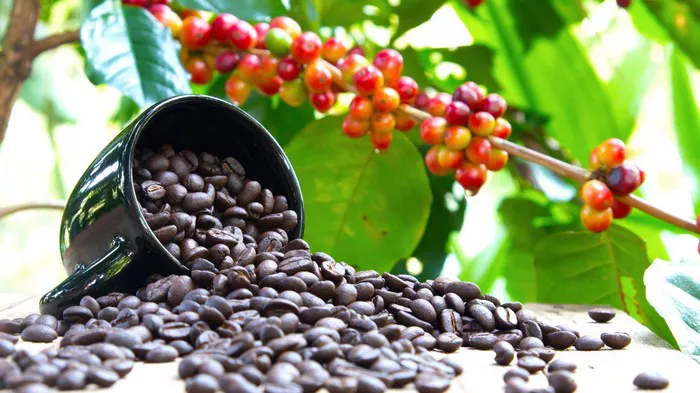Colombian coffee stands tall among the world’s finest brews, renowned for its rich flavors, enticing aroma, and impeccable quality. This South American gem has captivated coffee enthusiasts globally, earning a distinguished reputation that is unparalleled. In this comprehensive exploration, we delve into what makes Colombian coffee the epitome of excellence, dissecting its unique attributes, cultivation techniques, and the factors that contribute to its superiority.
Origins and Heritage
The story of Colombian coffee is intertwined with the nation’s history, culture, and geography. Dating back to the early 19th century, coffee cultivation became a cornerstone of Colombia’s economy, shaping its identity as a leading coffee-producing nation. Regions such as Antioquia, Huila, and Tolima emerged as prime coffee-growing territories, each offering distinct microclimates and terroirs that impart unique characteristics to the beans.
The Arabica Advantage
Central to Colombian coffee’s superiority is its predominant use of Arabica beans. Renowned for their smooth, nuanced flavors and low acidity, Arabica beans thrive in Colombia’s diverse landscapes, ranging from the high-altitude Andean mountains to the fertile valleys below. This emphasis on Arabica cultivars sets Colombian coffee apart, ensuring a consistently exceptional taste profile that captivates connoisseurs worldwide.
Ideal Growing Conditions
Colombia’s geography provides the perfect canvas for cultivating premium coffee beans. With altitudes ranging from 1,200 to 2,200 meters above sea level, coffee plantations benefit from cool temperatures, ample rainfall, and nutrient-rich volcanic soil. These optimal growing conditions promote slow bean maturation, allowing for the development of complex flavors and a distinctive acidity that characterizes Colombian coffee.
Meticulous Harvesting and Processing
The journey from bean to cup is meticulously orchestrated in Colombian coffee farms, where harvesting and processing techniques are executed with precision. Selective picking ensures that only ripe cherries are harvested, resulting in a more uniform flavor profile and superior quality. Following harvest, beans undergo rigorous processing methods, including wet and dry fermentation, washing, and sun-drying, to preserve their intrinsic flavors and aroma.
Quality Control and Certification
Colombian coffee is synonymous with quality, thanks to stringent regulations and certifications that uphold industry standards. The Colombian Coffee Growers Federation (FNC) oversees the quality control process, ensuring that all beans meet the strict criteria for size, color, and uniformity. Additionally, the Denomination of Origin status protects the integrity of Colombian coffee, safeguarding against imitations and counterfeit products in the market.
Sustainable Farming Practices
In recent years, Colombian coffee producers have embraced sustainable farming practices to protect the environment and support local communities. Initiatives such as shade-grown cultivation, water conservation, and organic farming methods are increasingly prevalent, preserving biodiversity and minimizing ecological impact. Furthermore, Fair Trade and Direct Trade partnerships empower farmers with fair wages and access to resources, fostering long-term sustainability within the industry.
Flavor Profiles and Tasting Notes
One of the most alluring aspects of Colombian coffee is its diverse flavor spectrum, ranging from floral and fruity to chocolatey and nutty. Each region imparts its distinct terroir on the beans, resulting in a myriad of tasting notes that tantalize the palate. Antioquia coffees often exhibit a pronounced sweetness with hints of caramel and citrus, while Huila beans boast a velvety body and notes of dark chocolate and stone fruit. Tolima coffees, on the other hand, are celebrated for their bright acidity and floral undertones, creating a sensory experience that is as varied as it is delightful.
Brewing Recommendations
To fully appreciate the complexity and richness of Colombian coffee, it’s essential to employ brewing methods that accentuate its flavors. For a classic Colombian brew, opt for a pour-over or drip coffee maker, using a medium grind to achieve optimal extraction. Alternatively, espresso enthusiasts can enjoy Colombian beans as a single-origin espresso or as the base for specialty drinks such as lattes and cappuccinos. Whichever method you choose, be sure to savor the nuances of aroma and flavor that Colombian coffee has to offer.
Conclusion
In conclusion, Colombian coffee stands as a paragon of excellence in the world of specialty coffee. From its storied origins to its meticulous cultivation and unparalleled flavor profiles, Colombian beans embody the pinnacle of quality and craftsmanship. Whether enjoyed as a morning pick-me-up or savored as an afternoon indulgence, Colombian coffee offers a sensory journey that delights the senses and leaves a lasting impression. So, the next time you savor a cup of Colombian brew, take a moment to appreciate the centuries-old tradition and artistry that culminate in every sip.


